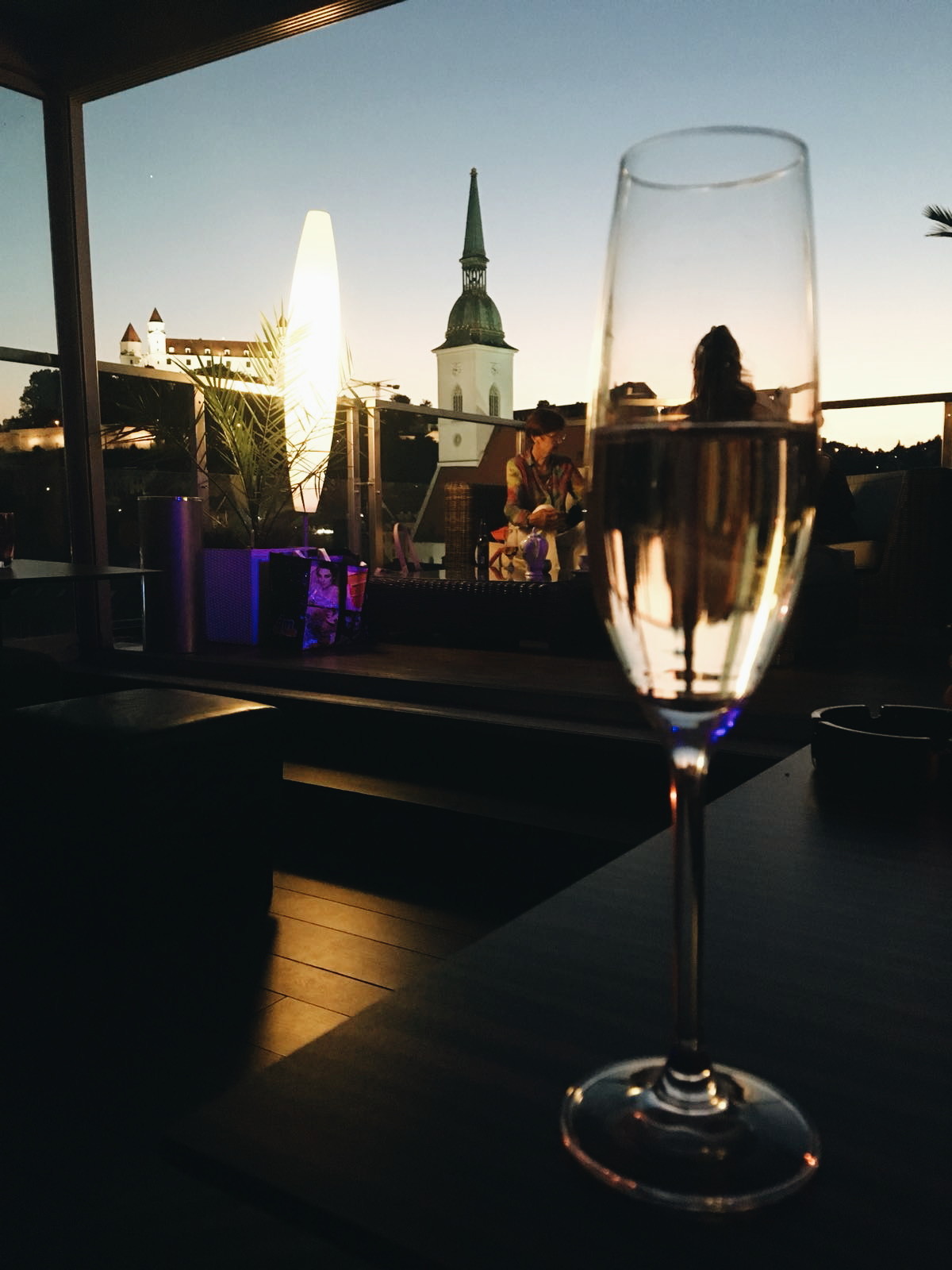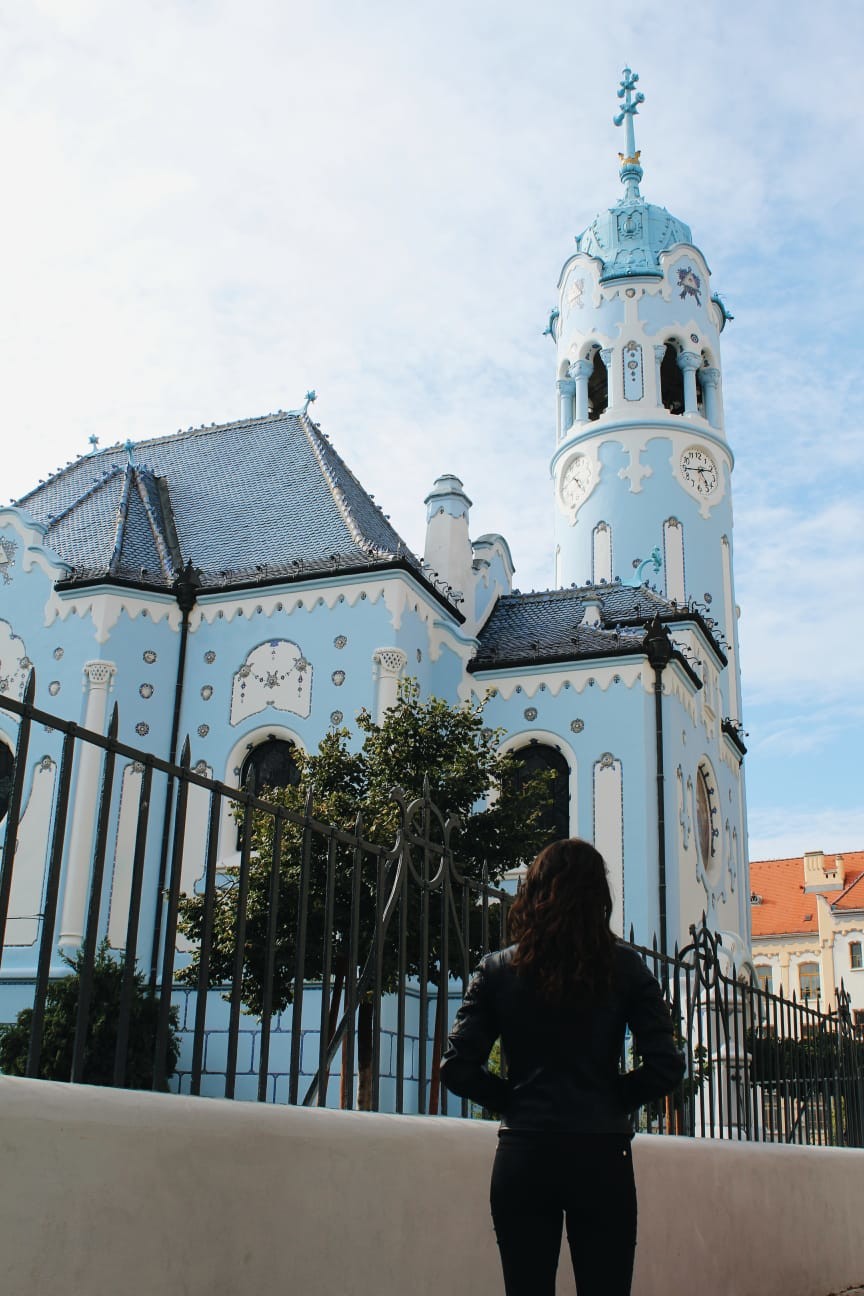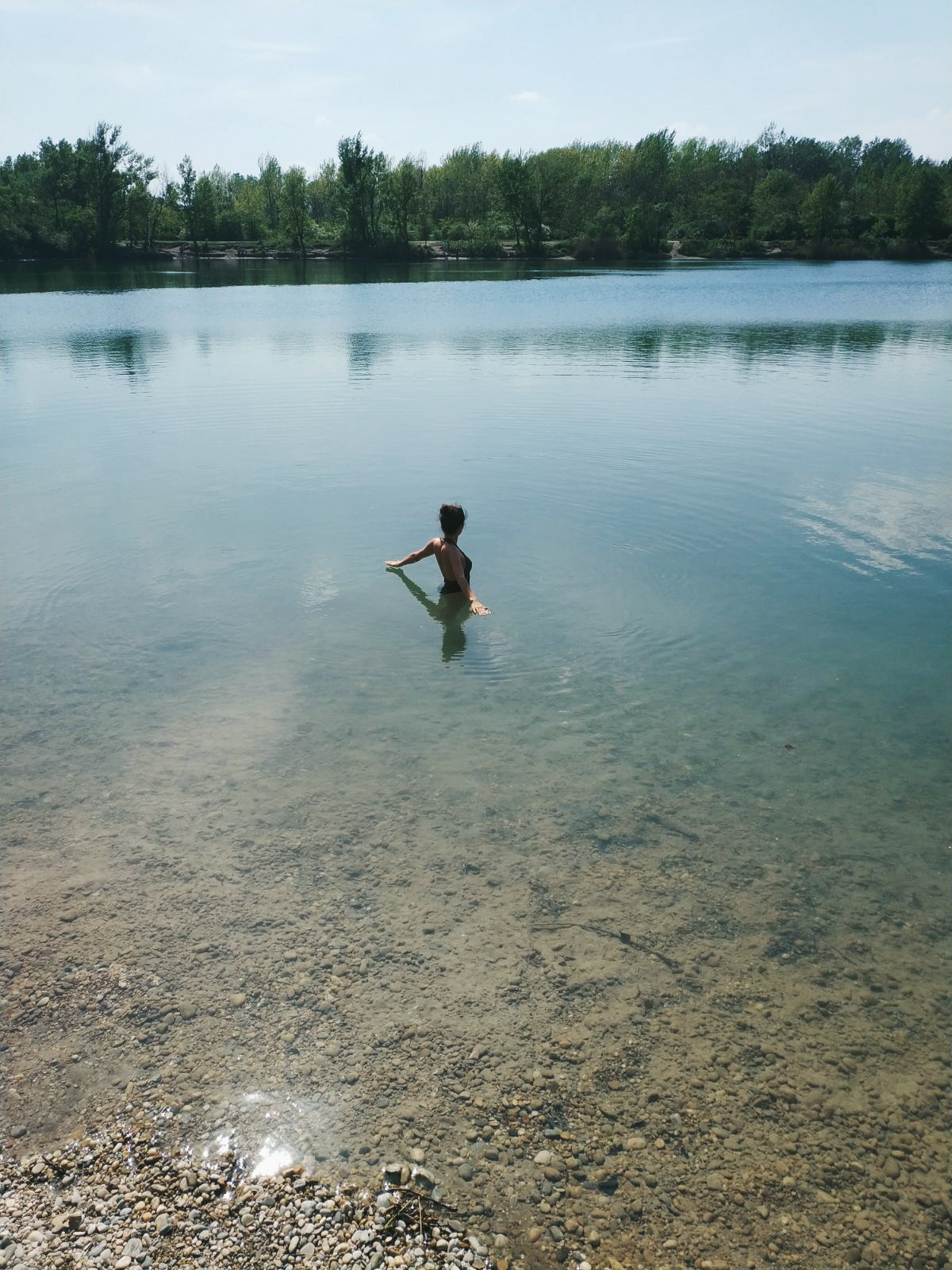17 things to see and do in Bratislava (Part 2)
Hello again, everyone! Here I bring you the second part to the last post, where I told you about nine things you can see and do in Bratislava, capital city of Slovakia and where I am currently living. If you have stumbled across this post by accident and have missed the first part of 17 things to see and do in Bratislava, it is hyperlinked so that you don’t miss a thing. And, without further ado, I will give you the last stops on this tour of Bratislava. Let’s begin!

10. Walk along the Danube riverbank
It is, without a doubt, worth a walk along the river, especially in the last hours of the day. You can see the different bridges and the area that is close to the Eurovea shopping centre, which is full of life in summer. There is a large lawn to lay down on and have a drink. Some people carry their towel and lie there to relax and sunbathe. This area is very nice because it is full of bars with chairs and sofas in a with a “chilled-out” atmosphere. Also, it is next to the river and there are enough trees so it is quite good for summer days when it gets too hot. The only downside is that you cannot swim in this part of the river because the current is very strong and large ships pass through constantly. Besides, the water is not very clean. You can cross a bridge and watch the sun go down. And, by the way, from the Lafranconi bridge you can bungee jump, so you know you can organise a different plan if you are from Erasmus or if you live here permanently.


11. Visit the residence of the Slovakian president
This is the Grassalkovich Palace, located in Hodžovo Square. I live a two minutes walking distance from here, so for me it is already an everyday activity, but I have to admit that the gardens open to the public from the back are quite beautiful, especially in summer. It is a quiet place to relax, read and rest. I recommend it.
12. The Blue Church
It is quite an original church, which is why I have included it here. As you will see, it is a blue-coloured church built in an art nouveau style, and it looks as though it was made from plasticine. Its actual name is “Church of Saint Elizabeth”, but everyone calls it “the blue church” for obvious reasons. It is very close to the historic centre so you can stop by to take a look. It is also completely blue inside. It depends on your luck as to whether or not you can visit inside. Sometimes it is open and sometimes not. The criteria that it follows to open to the public or not remains a mystery.

13. Slavín Memorial
This is a tribute to the Russian soldiers of the Soviet army who liberated different cities from the Nazi army during World War II. It is an impressive monument, with a very large obelisk that can be seen from almost anywhere in Bratislava. On top of the obelisk there is a Soviet soldier who represents all the soldiers that died, some of which are even buried there. Just below the obelisk are the names of the different cities in Slovakia that were gradually released by the red army, along with their corresponding date.

Furthermore, the views from this place are worth going to see as you can see the castle and the whole of the city of Bratislava. Normally, there are no tourists and it is a very quiet place. If you feel like burning a few calories, climbing to see this monument may be the perfect plan. You can get on the bus but, if the weather is nice, my recommendation is that you walk because you get to see very nice and interesting houses during the trip, since Slavin is one of the best areas of Bratislava to live in, in my opinion. Not only is it a quiet, aesthetic place that certainly invites reflection, but it is also a place to learn a little history and add some extra cultural enrichment to your trip.
14. Devín Castle
In the outskirts, taking bus number 29, you can visit Devín Castle, one of my favourite places in Bratislava. It is a castle in ruins, very different from the castle that I talked about in the previous post, as you can see in the following photo. It is a fortress that was destroyed by Napoléon. Here is the place where the Danube and Morava River meet, which made it a strategic point for trade. Right here is the border of Slovakia and Austria. In fact, this border can be crossed on foot. One day we walked to the castle Schlosshof in Austria, as I tell you about in my article on the Schloss Hof Christmas market. We walked a lot but it was a nice morning hike.

As a curious fact, it is said that when writing the novel "The Castle of the Carpathians”, Jules Verne was inspired by this castle. The best time of the year to visit this castle is in summer, as there are usually activities related to medieval times. For example, you can practice archery or there is a small obstacle course that is certainly reminiscent of the time of ladies, gentlemen and jesters. Additionally, from the month of May to the month of September, you can pay €8 to see a kind of “show” from the Middle Ages, where, in addition to practicing the aforementioned activities, you can see the duels of knights, jousts or medieval dances. Everyone dresses in medieval clothing; it is very well set-up and it is perfect to take the little ones to. To go, from MOST SNP (the stop that is closest to the UFO) you can take bus number 29. The entrance for students costs €1. 50 and you can spend about an hour and a half or two there, so I think it is well priced.
15. The Botanical Garden
Heading to the castle of Devín by bus, you will pass through the botanical gardens. Normally it is not something that tourists visit, but I like it a lot. It is quite large and the entrance costs €1. 50 with a student card. In spring, approaching the summer, it is full of flowers of different colours, very tall trees, wide grounds with grass to lie down on. There are also ponds with aquatic plants and small paths to walk on. Although, for me, the best part is the greenhouses. You’ll feel boiling hot, but this is where the most interesting plants are found, all identified with a label. The Botanical Garden belongs to Comenius University, so it is a site partly dedicated to research. If you stay two days in Bratislava, you have to see it. I’m not sure what it would be like in winter with the snow, but I am sure that it is still worth a visit. Here are some photos I took that day.


16. Walk the route among the lakes
Around Bratislava, in the outskirts, there are many lakes where you can take a dip in summer. The water is pretty good, not cold at all. The best-known lake is Zlate Piesky, the translation of which would be something along the lines of "golden sands. " It has a great history behind it: there was a plane crash on 28th July, 1976. The Bratislava airport is nearby, and when the plane was approaching the airport, it lost control and finally crashed into the lake. The entire crew died (6 people) and 70 of the 73 passengers died. It was a huge tragedy. Now, Lake Zlate Piesky is the most popular in Bratislava. It is full of young people, there are clubs that serve generous cocktails, and a reggae festival is held at the end of summer. The best thing about this lake is that you can practice wakeboarding! And there is also an area to play volleyball. But, in my opinion, the best lakes in Bratislava are those on the outskirts such as Rusovce, Cunovo, Veľký Draždiak or Košariská. They are cleaner, there are fewer people and, for those who are interested, they all have a nudist area. My friends and I always went to these lakes in summer because they satisfied our sea/ homesickness a little. If you are in Bratislava and it is unbearably hot, it could be a good idea to go.

17. Go to the TV Tower
If you want a different activity, I recommend you visit the TV Tower, visible from different parts of Bratislava. To get to it you have to take a chairlift. The oldest chairlift on which I have ridden, for sure. The chairlift does not take you right to the tower, so you have to walk a little, but the outside is very beautiful because it is full of nature. It feels good to get away from the city and to breathe some fresh air. Once in the tower, you have one of the best views of Bratislava from quite far away. It is at that moment that you can really see the real size of the capital of Slovakia. Furthermore, there is a restaurant where you can have a drink. It was not too expensive, considering its location. The most interesting thing about this restaurant is that it rotates and while you eat, you can constantly have a 360-degree view of the entire city. Something quite curious that I realised about when I had a full panorama of Bratislava in front of me is that the castle, Slavín monument and the TV tower are perfectly aligned, one behind the other. Curious.

And that is everything that I wanted to tell you. I hope that you have liked these 17 things to see and do in Bratislava. As I have said, if you want to do them all you will need two days as some of them, like the TV Tower, are in the outskirts. Bratislava is often undervalued due to the big cities that are near to it, but I believe that it deserves a visit as it is a dynamic and special place with lots of history behind it. If you are visiting Vienna or Budapest, coming to Bratislava should be an obligatory stop.
Thank you very much for reading until the end. Until next time, with more information about Bratislava and Slovakia. I hope you are enjoying it.
Photo gallery
Content available in other languages
Want to have your own Erasmus blog?
If you are experiencing living abroad, you're an avid traveller or want to promote the city where you live... create your own blog and share your adventures!
I want to create my Erasmus blog! →
























Comments (0 comments)